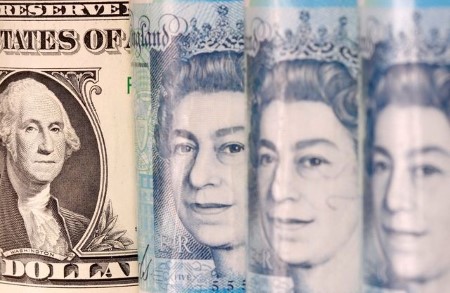




Philippines Trade Update: Exports momentum continues
 DOWNLOAD
DOWNLOAD

Quarterly Economic Growth Release: More BSP cuts to come
 DOWNLOAD
DOWNLOAD

Monthly Economic Update: Fed catches up
 DOWNLOAD
DOWNLOAD


US recap: BoE’s market stabilizing move hits overdone dollar

Sept 28 (Reuters) – The dollar index fell more than 1% on Wednesday, retreating from 20-year highs after the BoE’s announcement of emergency gilts purchases pushed yields lower globally, improving sentiment among investors fearing rising rates and UK contagion.
The exodus from gilts had lifted yields globally and the sterling selloff sent investors scurrying into the safe-haven dollar, leading to a risk rally and sharp reversal out of the dollar when the BoE stanched the bleeding in the UK government bond market.
The BoE intervention aimed to halt a crisis that developed after the UK’s budget-busting fiscal stimulus plan panicked investors and left UK pensions and mortgage lenders at dire risk.
The bond purchases could buy time for the financial sector to address funding issues and the BoE to hike rates enough to assuage investors’ inflation fears.
It could also give sterling a reprieve after it plunged to record lows, which exacerbated concerns over rising inflation and the clash between monetary and fiscal policy.
With the quarter coming to an end and the dollar nearing its most overbought quarterly RSI readings since the 1985 Plaza Accord that weakened it, a period-end profit-taking pullback fits the bill, with the scale depending on how US core PCE and payrolls data stack up on this and next Friday.
Risk-seeking flows out of the dollar could prove short-lived, however, with the Russian sword of Damocles hanging over energy markets and European economies.
EUR/USD gained 1.4% Wednesday after holding above Monday’s 20-year lows at 0.9528 on EBS. Wednesday’s bullish candlesticks would be bolstered by a close above Monday’s 0.97095 high, with further hurdles near 0.9800/65.
Sterling gained 1.4%, as the incredible 89bp drop in 30-year gilt yields more than erased Monday and Tuesday’s terrifying rise. The BoE is still priced to hike rates by 218bp by December and 335bp by May for a 5.8% policy rate ceiling, versus peak Fed rate pricing now at 4.45%.
A close above the tenkan at 1.0903 and Monday’s 1.0934 high is needed to keep the corrective rally running into quarter-end.
USD/JPY fell 0.5% due to retreating Treasury yields versus static JGB yields. The recovery from Thursday’s Japanese intervention low at 140.31 faltered again ahead of major 145 options expiries, as traders remain wary of getting caught long close to the 145.90 peak that preceded the intervention plunge.
The Australian and Canadian dollars gained 1.3% and 0.8%, but the offshore yuan was still down 0.14% after USD/CNH earlier traded beyond 2019/20 peaks at 7.1960/66.
(Editing by Burton Frierson; Randolph Donney is a Reuters market analyst. The views expressed are his own.)
This article originally appeared on reuters.com





 By Reuters
By Reuters